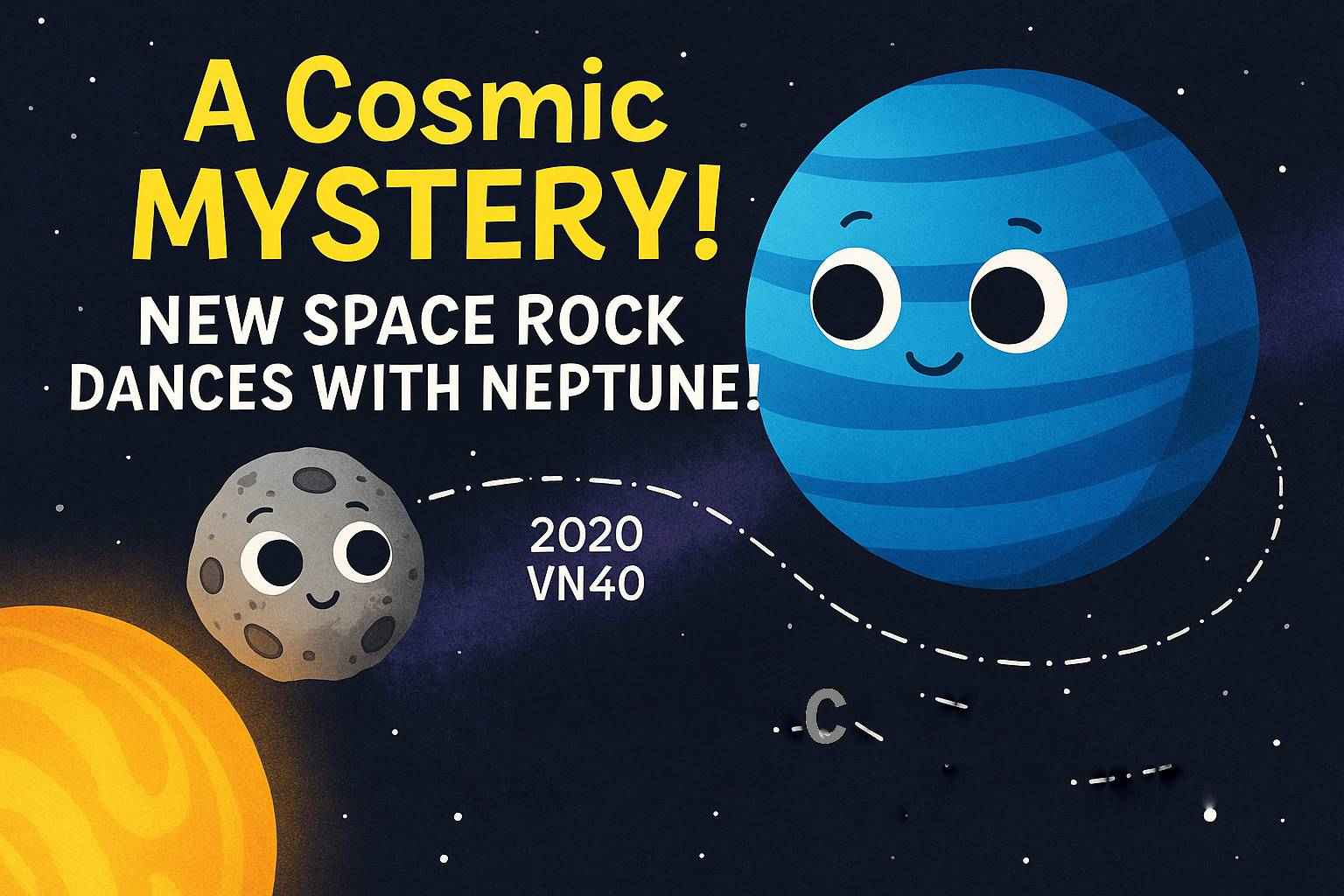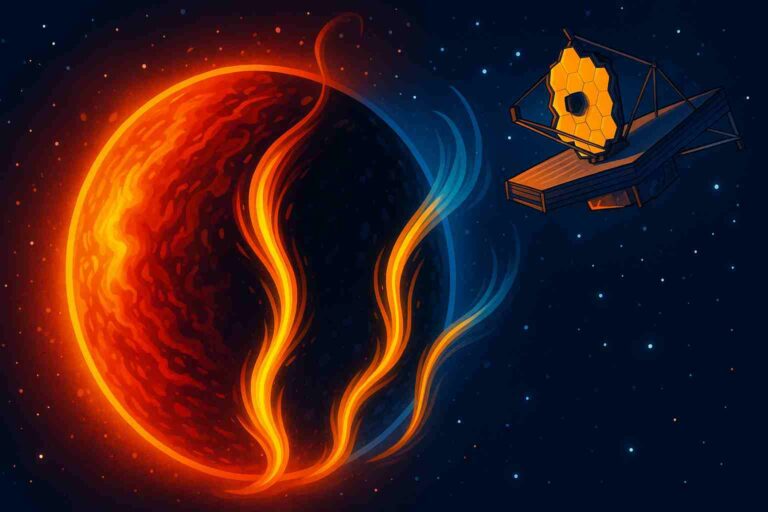
Did you know that far out in space, there’s a mysterious space rock that seems to be dancing with Neptune? Astronomers have just discovered this cosmic dancer, and it’s unlike anything they’ve ever seen before!
Let’s take a space journey to learn more about this fascinating find — and why scientists are so excited about it.
Meet 2020 VN40 — The Dancing Space Rock
The newly found space rock is called 2020 VN40, and it lives in the outer solar system, far beyond Neptune, the giant blue planet. What makes 2020 VN40 special is how it moves: it orbits the Sun once for every ten times Neptune does!
It’s as if Neptune is playing a slow, steady drumbeat, and 2020 VN40 is twirling in rhythm to it. This is the first time astronomers have discovered an object following this exact kind of cosmic rhythm.
How Did Scientists Find It?
This space mystery was solved by a team of astronomers from the Center for Astrophysics | Harvard & Smithsonian. They used super-powerful telescopes, like the Canada-France-Hawaii Telescope and the Gemini Observatory, to search for strange objects far from Earth.
They looked for trans-Neptunian objects, which are icy rocks and small planets that live way beyond Neptune. Using special tools and clever thinking, the scientists spotted 2020 VN40 on its unusual path.
A Tilted, Twisted Orbit
But that’s not all! This space rock doesn’t just circle around the Sun like Earth does. Instead, 2020 VN40 travels on a tilted and slanted path, way up and down from the usual flat plane of planets in our solar system.
Even though it looks like 2020 VN40 gets close to Neptune, it’s actually very far away — it just appears close when viewed on a flat map of the solar system.
One scientist, Dr. Ruth Murray-Clay, says, “It’s like finding a hidden rhythm in a song we thought we knew!” That’s how surprising this discovery was!
Why Is This Important?
Discovering 2020 VN40 is exciting because it helps scientists understand how objects in the outer parts of the solar system move.
It also teaches us that the solar system is full of surprises, with hidden patterns and rhythms we haven’t noticed before. The more we learn, the more questions we have — like how did this object end up on such a strange path? And are there more cosmic dancers out there?
What’s Next?
The team is eager to find more space rocks like 2020 VN40. With powerful new telescopes like the Vera C. Rubin Observatory, they hope to discover even more strange and wonderful objects in the outer reaches of our solar system.
As one scientist put it, “This is just the beginning. We’re opening a new window into the solar system’s past!” Who knows what other secrets the universe is waiting to share?
🚀 Did You Know?
- Neptune is the eighth planet from the Sun and is known for its deep blue color.
- The outer solar system is full of icy rocks, comets, and dwarf planets.
- The farthest planet in our solar system, Neptune, takes 165 Earth years to orbit the Sun just once!






